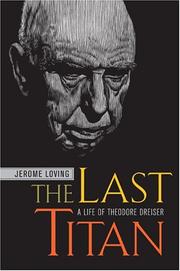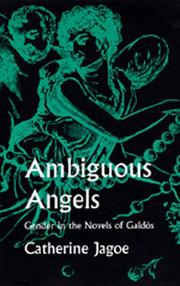| Listing 1 - 6 of 6 |
Sort by
|
Book
ISBN: 1526155583 1526145669 1526145642 1526145650 9781526145666 9781526145659 9781526145642 Year: 2020 Publisher: Manchester Manchester University Press
Abstract | Keywords | Export | Availability | Bookmark
 Loading...
Loading...Choose an application
- Reference Manager
- EndNote
- RefWorks (Direct export to RefWorks)
'Women of War' examines the FANY as a case study of gender modernity using newspapers, memoirs, diaries, letters interviews, photographs and poetry. While these New Women challenged the limits of convention in terms of behaviour, dress and role, they were simulataneously deepy conservative, upholding imperialist, unionist and anti-feminist values.
Women --- Women and war --- Social conditions. --- History --- First Aid Nursing Yeomanry. --- War and women --- War --- Women and the military --- F.A.N.Y. --- FANY --- Women's Transport Service (F.A.N.Y.) --- Class. --- Driving. --- FANY. --- Femininity. --- First aid. --- Gender. --- Horse-riding. --- Modern. --- Modernism. --- Modernity. --- New Woman. --- Nursing. --- War.
Book

ISBN: 1978814488 1978814453 Year: 2021 Publisher: New Brunswick, NJ : Rutgers University Press,
Abstract | Keywords | Export | Availability | Bookmark
 Loading...
Loading...Choose an application
- Reference Manager
- EndNote
- RefWorks (Direct export to RefWorks)
Bollywood’s New Woman examines Bollywood’s construction and presentation of the Indian Woman since the 1990s. The groundbreaking collection illuminates the contexts and contours of this contemporary figure that has been identified in sociological and historical discourses as the “New Woman.” On the one hand, this figure is a variant of the fin de siècle phenomenon of the “New Woman” in the United Kingdom and the United States. In the Indian context, the New Woman is a distinct articulation resulting from the nation’s tryst with neoliberal reform, consolidation of the middle class, and the ascendency of aggressive Hindu Right politics.
Motion picture industry --- Women in motion pictures --- Women --- History --- Social conditions --- liberalization, liberation, Bollywood, India, Indian women, neoliberal, reform, middle class, Hinduism, Hindu right politics, representation, cinema, sexuality, femininity, Yash Raj, media studies, gender studies, Asian studies, popular culture, new woman, body positive, plus size, politics, contemporary.
Book
ISBN: 1487546106 1487546092 Year: 2023 Publisher: Washington, D. C. : University of Toronto Press,
Abstract | Keywords | Export | Availability | Bookmark
 Loading...
Loading...Choose an application
- Reference Manager
- EndNote
- RefWorks (Direct export to RefWorks)
"The fin de siècle not only designated the end of the Victorian epoch but also marked a significant turn toward modernism. Extraordinary Aesthetes critically examines literary and visual artists from England, Ireland, and Scotland whose careers in poetry, fiction, and illustration flourished during the concluding years of the nineteenth century. This collection draws special attention to the exceptional contributions that artists, poets, and novelists made to the cultural world of the late 1880s and 1890s. The essays illuminate a range of established, increasingly acknowledged, and lesser-known figures whose contributions to this brief but remarkably intense cultural period warrant close attention. Such figures include the critically neglected Mabel Dearmer, whose stunning illustrations appear in Evelyn Sharp’s radical fairy tales for children. Equally noteworthy is the uncompromising short fiction of Ella D’Arcy, who played a pivotal role in editing the most famous journal of the 1890s, the Yellow Book. The discussion extends to a range of legendary writers, including Max Beerbohm, Oscar Wilde, and W.B. Yeats, whose works are placed in dialogue with authors who gained prominence during this period. Bringing women’s writing to the fore, Extraordinary Aesthetes rebalances the achievements of artists and writers during the rapidly transforming cultural world of the fin de siècle."--
Women authors, Scottish --- Women authors, Irish --- Women authors, English --- Women artists --- Decadence (Literary movement) --- Aestheticism (Literature) --- Aesthetic movement (Art) --- History --- Great Britain. --- 1890s. --- Aesthetic Movement. --- British literature. --- Ella D’Arcy. --- Evelyn Sharp. --- Mabel Dearmer. --- Max Beerbohm. --- New Woman fiction. --- Oscar Wilde. --- W.B. Yeats. --- Yellow Book. --- aesthetes. --- aestheticism. --- decadence. --- fin de siècle. --- 1800-1999

ISBN: 052092911X 1597349410 9780520929111 1417585005 9781417585007 0520234812 9780520234819 9781597349413 Year: 2005 Publisher: Berkeley University of California press
Abstract | Keywords | Export | Availability | Bookmark
 Loading...
Loading...Choose an application
- Reference Manager
- EndNote
- RefWorks (Direct export to RefWorks)
When Theodore Dreiser first published Sister Carrie in 1900 it was suppressed for its seamy plot, colloquial language, and immorality-for, as one reviewer put it, its depiction of "the godless side of American life." It was a side of life experienced firsthand by Dreiser, whose own circumstances often paralleled those of his characters in the turbulent, turn-of-the-century era of immigrants, black lynchings, ruthless industrialists, violent labor movements, and the New Woman. This masterful critical biography, the first on Dreiser in more than half a century, is the only study to fully weave Dreiser's literary achievement into the context of his life. Jerome Loving gives us a Dreiser for a new generation in a brilliant evocation of a writer who boldly swept away Victorian timidity to open the twentieth century in American literature. Dreiser was a controversial figure in his time, not only because of his literary efforts, which included publication of the brutal and heartbreaking An American Tragedy in 1925, but also because of his personal life, which featured numerous sexual liaisons, included membership in the communist party, merited a 180-page FBI file, and ended in Hollywood. The Last Titan paints a full portrait of the mature Dreiser between the two world wars-through the roaring twenties, the stock market crash, and the Depression-and describes his contact with important figures from Emma Goldman and H.L. Mencken to two presidents Roosevelt. Tracing Dreiser's literary roots in Hawthorne, Emerson, Thoreau, and especially Whitman, Loving has written what will surely become the standard biography of one of America's best novelists.
Novelists, American --- Journalists --- Dreiser, Theodore, --- Dreiser, Theodore --- Novelists [American ] --- 20th century --- Biography --- United States --- american authors. --- american literature. --- american novels. --- biography. --- class. --- classics. --- communism. --- dreiser. --- emerson. --- emma goldman. --- factory workers. --- famous authors. --- fbi. --- fdr. --- gender. --- hawthorne. --- hollywood. --- immigration. --- industrialists. --- journalist. --- labor movement. --- literary celebrity. --- literature. --- lynchings. --- mencken. --- naturalism. --- new woman. --- nonfiction. --- politics. --- progressive era. --- realism. --- roaring 20s. --- robber barons. --- roosevelt. --- sexual morality. --- sexuality. --- social change. --- social commentary. --- thoreau. --- urban life. --- western canon. --- whitman. --- workers rights.

ISBN: 0520083563 0520914171 0585231443 9780520914179 9780585231440 9780520083561 Year: 1994 Publisher: Berkeley University of California Press
Abstract | Keywords | Export | Availability | Bookmark
 Loading...
Loading...Choose an application
- Reference Manager
- EndNote
- RefWorks (Direct export to RefWorks)
The contradictory nature of the work of Benito Pérez Galdós, Spain's greatest modern novelist, is brought to the fore in Catherine Jagoe's innovative and rigorous study. Revising commonly held views of his feminism, she explores the relation of Galdós's novels to the "woman question" in Spain, arguing that after 1892 the muted feminist discourse of his early work largely disappears. While his later novels have been interpreted as celebrations of the emancipated new woman, Jagoe contends that they actually reinforce the conservative, bourgeois model of frugal, virtuous womanhood--the angel of the house. Using primary sources such as periodicals, medical texts, and conduct literature, Jagoe's examination of the evolution of feminism makes Ambiguous Angels valuable to anyone interested in gender, culture, and narrative in nineteenth-century Europe.
Sex role in literature. --- Women in literature. --- Fiction --- Sociology of the family. Sociology of sexuality --- anno 1800-1899 --- anno 1900-1999 --- Spain --- Women in literature --- Sex role in literature --- Romance Literatures --- Languages & Literatures --- Spanish Literature --- Woman (Christian theology) in literature --- Women in drama --- Women in poetry --- Pérez Galdós, Benito, --- Galdós, Benito Pérez, --- Péres Galdós, Benito, --- Pérez Galdós, B. --- Criticism and interpretation. --- Spanish literature. --- 1892. --- 19th century. --- angel of the house. --- benito prez galds. --- bourgeois model. --- conduct literature. --- conservative. --- culture. --- emancipated new woman. --- europe. --- evolution of feminism. --- feminism. --- frugal. --- gender. --- medical texts. --- muted feminist discourse. --- narrative. --- periodicals. --- spain. --- studying writing. --- virtuous womanhood. --- woman question. --- Gender roles --- Literature --- Images of women --- Book
Book
ISBN: 1479865494 1479875104 Year: 2018 Publisher: New York, NY : New York University Press,
Abstract | Keywords | Export | Availability | Bookmark
 Loading...
Loading...Choose an application
- Reference Manager
- EndNote
- RefWorks (Direct export to RefWorks)
Between the Harlem Renaissance and the end of World War II, a discourse that privileged a representative ideal of brown beauty womanhood emerged as one expression of race, class, and women's status in the modern nation. This discourse on brown beauty accrued great cultural currency across the interwar years as it appeared in diverse and multiple forms. Studying artwork and photography; commercial and consumer-oriented advertising; and literature, poetry, and sociological works, this text analyzes African American print culture with a central interest in women's social history. It explores the diffuse ways that brownness impinged on socially mobile New Negro women in the urban environment during the interwar years and shows how the discourse was constructed as a self-regulating guide directed at an aspiring middle class.
African American women --- Beauty, Personal --- Beauty --- Complexion --- Grooming, Personal --- Grooming for women --- Personal beauty --- Personal grooming --- Toilet (Grooming) --- Hygiene --- Beauty culture --- Beauty shops --- Cosmetics --- Afro-American women --- Women, African American --- Women, Negro --- Women --- Race identity --- Social conditions --- Social aspects --- African American literature. --- African American womanhood. --- African American women. --- African American youth. --- Brown v Board of Education. --- Charles H Parrish. --- Charles S Johnson. --- Cold War politics. --- Dark Princess A Romance. --- Elise Johnson McDougald. --- Franklin E Frazier. --- Great Depression. --- Harlem Renaissance fiction. --- Harlem educator. --- New Negro woman. --- New Negro. --- The Crisis. --- W E B Du Bois. --- WWII. --- black beauty ideals. --- black middle class. --- brown skin beauty ideals. --- brown skin models. --- brown-skin mulatta. --- consumer advertising. --- consumption. --- cosmetics. --- gender politics. --- interwar years. --- literary journals. --- middle class. --- mixed race. --- new woman. --- print culture. --- race concept. --- racial liberals. --- transnational activism. --- urbanization and race. --- woman’s era. --- women's poetry.
| Listing 1 - 6 of 6 |
Sort by
|

 Search
Search Feedback
Feedback About UniCat
About UniCat  Help
Help News
News